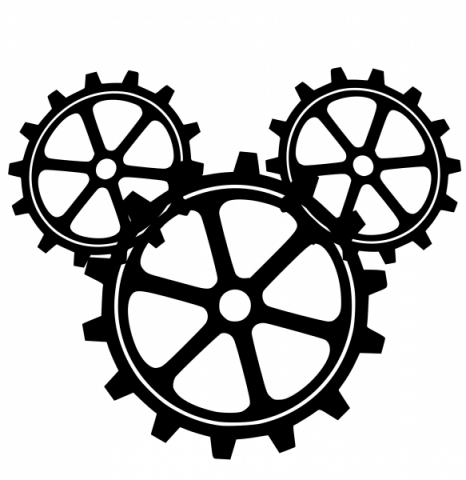Drawing the inbetweens

Three French animators are sitting in a hotel lobby in Pyongyang, the capital of North Korea, also known as the Democratic People's Republic of Korea, discussing their work over drinks. Richard, employed by the French company Ellipse to work on an adaptation of Corto Maltese for television, complains about the quality of the drawings done in Seoul. He says they had to take all the scenes and redo everything in Paris. But since they ran out of money, they are finishing off the production in Pyongyang, doing the “inbetweens”.
In animation, the “inbetweens” are the drawings between key frames that help to create the illusion of motion. The key frames define the beginning and end of each movement, and are usually drawn by a senior artist, after which the task of filling in the rest of the drawings is left to assistants. Since a minute of animation may take up to a thousand drawings, this is a laborious and mundane process requiring many man-hours.
Such work is often outsourced to countries where the labour is cheap, accounting for the presence of the three animators in this scene taken from the graphic novel “Pyongyang” by Guy Delisle, published in 2003. In this autobiographical comic, the author describes his two-month stay in North Korea, supervising the work that is being done on European animations at SEK, the Scientific and Educational Film Studio of Korea.
The book offers a wry commentary on the absurd situations the author encounters as one of the few foreigners allowed into the country. Shaded in sober grays, it paints a bleak picture of a totalitarian state that is in complete control of his movements. Much is made of the fact that wandering out on the streets without a guide is not allowed. A colleague of the author has the negatives of his film scratched out when returning from a clandestine trip by himself. In a way, the suggestion is that visualizing North Korea in cartoon drawings is tantamount to circumventing censorship. The book became a bestseller, and has been hailed as a “political” comic for exposing the realities of daily life in a country that is otherwise isolated from the western gaze.
Talking about political literary criticism, however, left wing theorist Walter Benjamin once said that the important question was not how a work of art stands in relation to the relationships of production of a period, but how it stands in them. So what is politically perhaps more interesting about this book than its stylish rehashing of western clichés about communist states, is the almost offhand insight that it gives into the industry of animation.
Another scene: during his first day on the job, the author meets Sandrine, the colleague he is about to replace. They are old acquaintances, and their conversation takes them back to previous encounters. The last time they met for work was in Saigon, before that Paris, and ten years ago in the south of France. It reads as a journey in reverse through the different stages of globalisation.
Most of the world's outsourced animation is done in Seoul, South Korea, where up to sixty studios churn out the drawings for well known series such as “The Simpsons” and “Ren and Stimpy”. The system works as a kind of highly decentralized “cottage industry”, where studios take on more work than they can handle, subcontracting parts of it out to smaller ones, who in turn employ freelancers to do the job. In this way, the original client may never even know where the animation is actually made, only caring about the delivery of the product and claiming the copyright.
Apparently it was only a matter of time before this frenzy of subcontracting would fan out to North Korea, where state-owned SEK is now one of the largest animation studios in the world, employing 1500 people and subcontracting work for over 70 companies around the globe. “Here I am, working for France's biggest television network”, we see in a speech bubble over the author's head, as he looks at the Korean animators leaving the SEK building on payday with bags of rice on their shoulders.
It has been said that even Walt Disney's “Pocahontas” and “The Lion King” have been drawn in Pyongyang. This is unofficial, of course, since no American company will admit to having commercial relations with the communist state due to the “Trading with the Enemy Act”. Interestingly, the only real threat of censorship Delisle encountered was from Protecrea, the company that originally sent the author to North Korea. Having signed a confidentiality agreement, he was going to be sued by them for publishing the book. But the global ebb and flow of capital pushed the company into bankruptcy, and they ceased to exist before they could stop him.
Delisle's graphic novel may not quite live up to Walter Benjamin's definition of a political work of art, despite its built-in narrative on global capitalism, because it has surrendered to the conditions of its production instead of changing them from within. How legitimate is it nowadays, though, to ask how a work of art stands in relation to the relationships of production? After all, the original question was raised in 1934, in front of a group of writers for whom the proletarian revolution was a concrete reality, with the locomotive of history, in true dialectic fashion, inevitably headed for communism.
The ambiguity between fate and ambition that fueled the conviction of these writers seems out of place today. For the question to become pertinent again, that is to say, more than an exercise in radical chic, we may also need to start answering the question: who is the art critic, and where does his or her art criticism stand in relation to the relationships of production?
Published in:
- Mugalari, el suplemento cultural del periódico Gara.
Recent comments